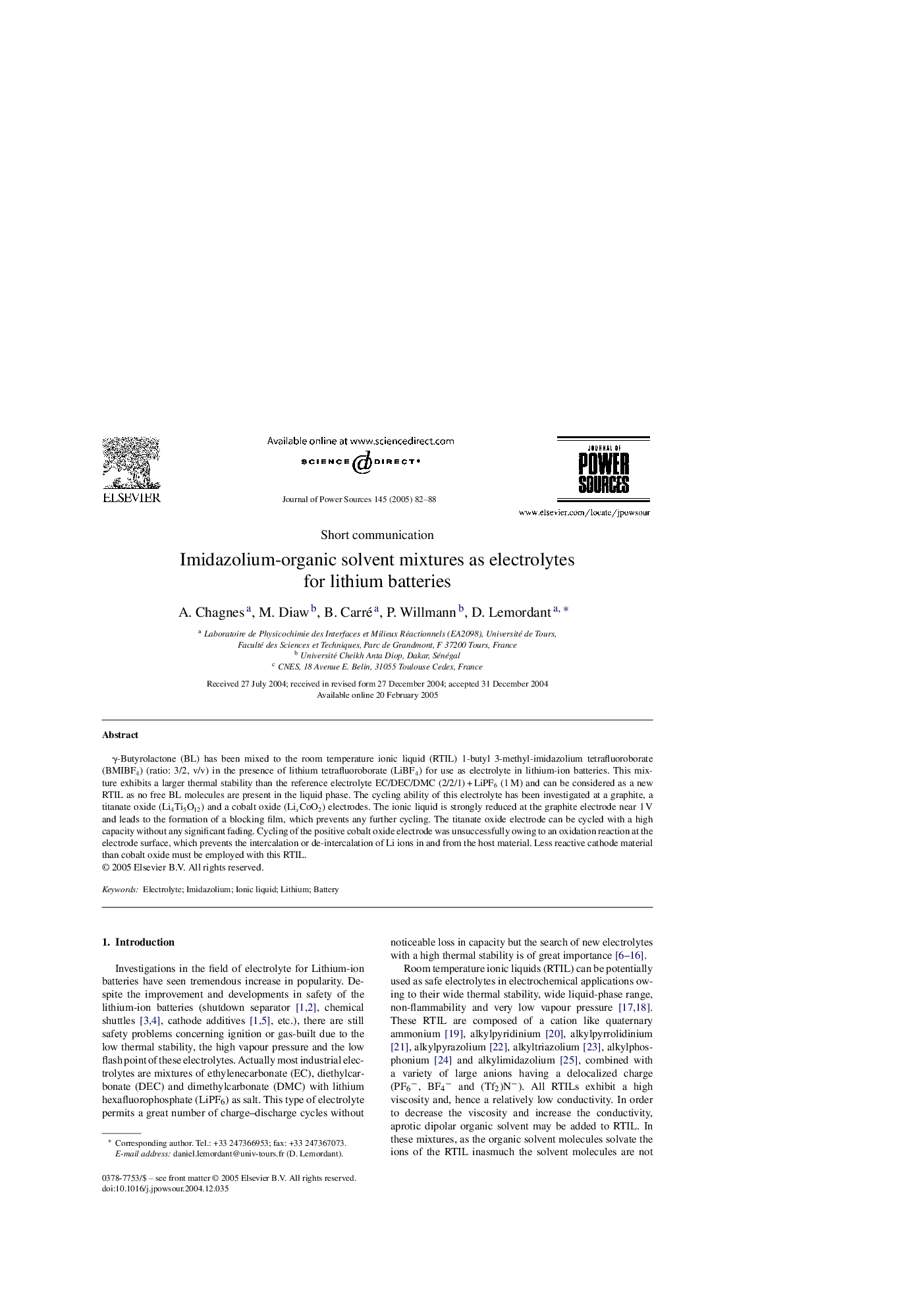| Article ID | Journal | Published Year | Pages | File Type |
|---|---|---|---|---|
| 10568051 | Journal of Power Sources | 2005 | 7 Pages |
Abstract
γ-Butyrolactone (BL) has been mixed to the room temperature ionic liquid (RTIL) 1-butyl 3-methyl-imidazolium tetrafluoroborate (BMIBF4) (ratio: 3/2, v/v) in the presence of lithium tetrafluoroborate (LiBF4) for use as electrolyte in lithium-ion batteries. This mixture exhibits a larger thermal stability than the reference electrolyte EC/DEC/DMC (2/2/1) + LiPF6 (1 M) and can be considered as a new RTIL as no free BL molecules are present in the liquid phase. The cycling ability of this electrolyte has been investigated at a graphite, a titanate oxide (Li4Ti5O12) and a cobalt oxide (LixCoO2) electrodes. The ionic liquid is strongly reduced at the graphite electrode near 1 V and leads to the formation of a blocking film, which prevents any further cycling. The titanate oxide electrode can be cycled with a high capacity without any significant fading. Cycling of the positive cobalt oxide electrode was unsuccessfully owing to an oxidation reaction at the electrode surface, which prevents the intercalation or de-intercalation of Li ions in and from the host material. Less reactive cathode material than cobalt oxide must be employed with this RTIL.
Related Topics
Physical Sciences and Engineering
Chemistry
Electrochemistry
Authors
A. Chagnes, M. Diaw, B. Carré, P. Willmann, D. Lemordant,
